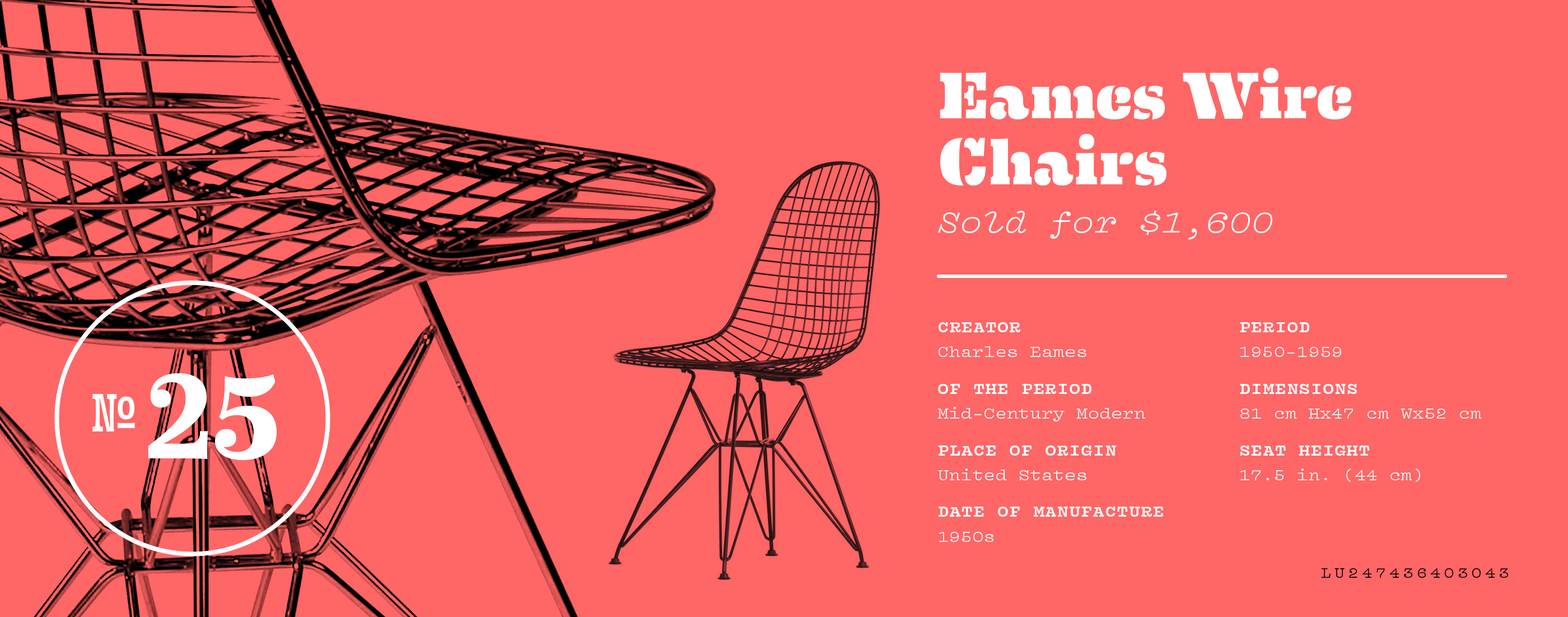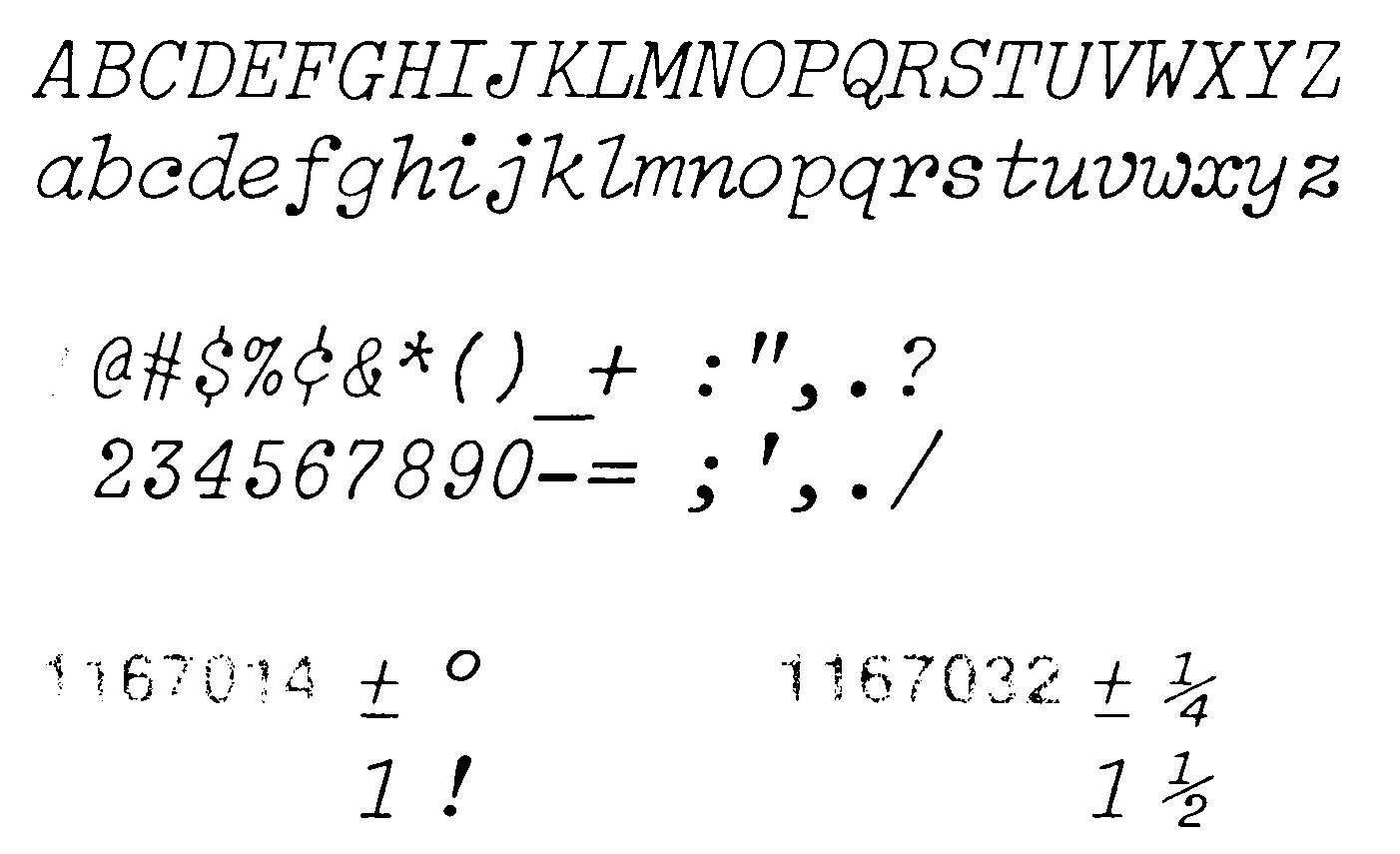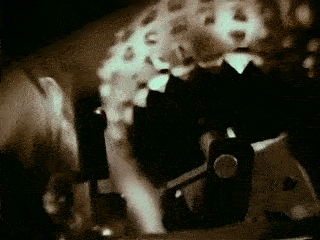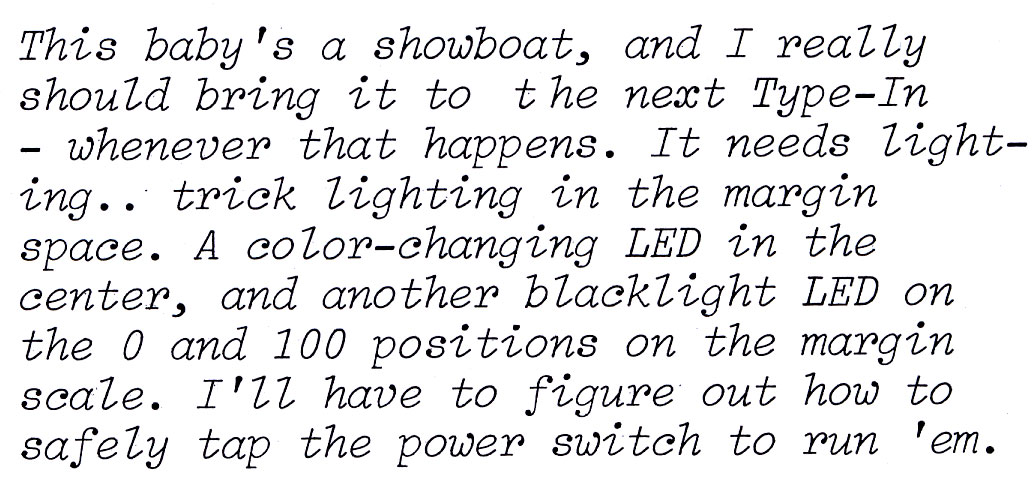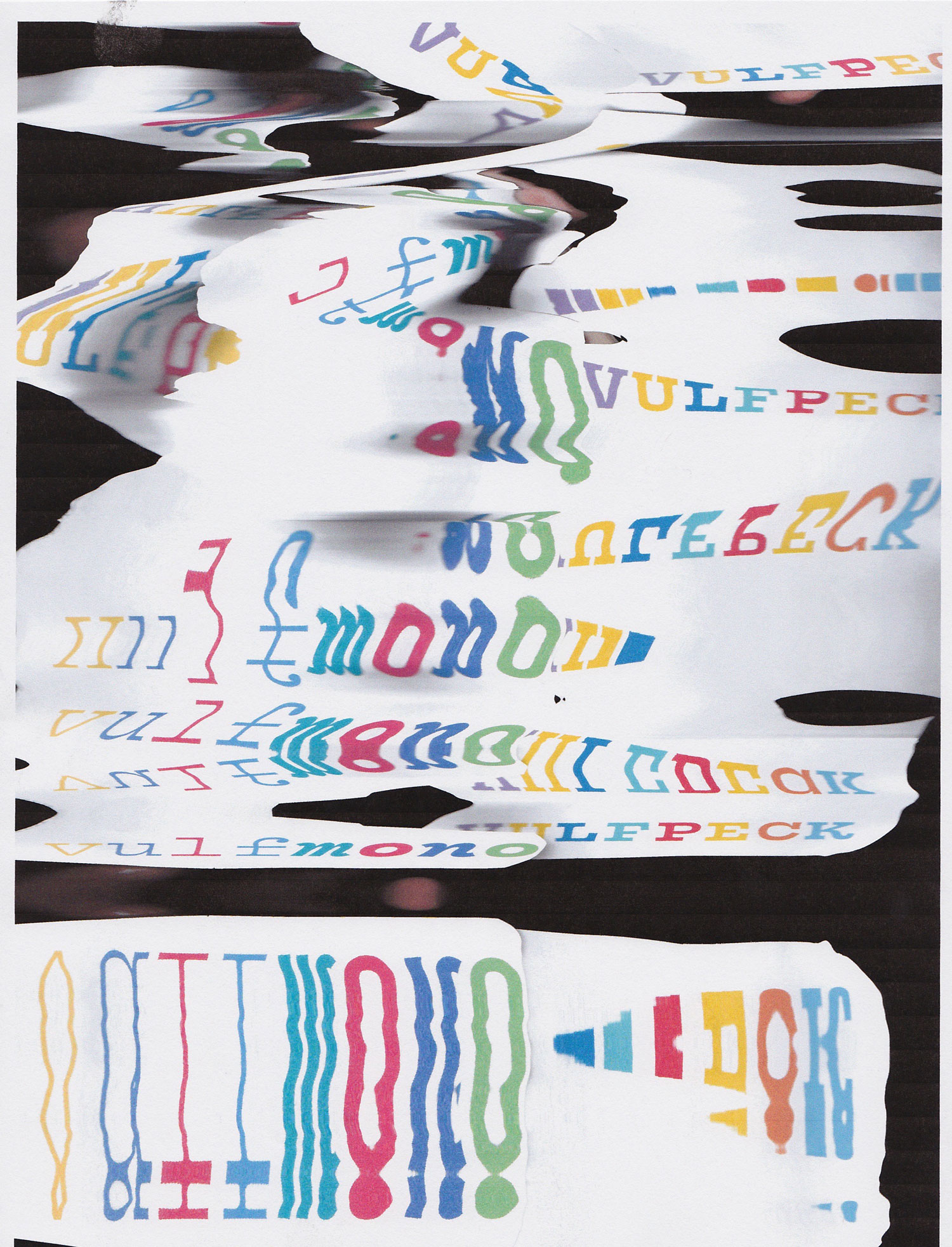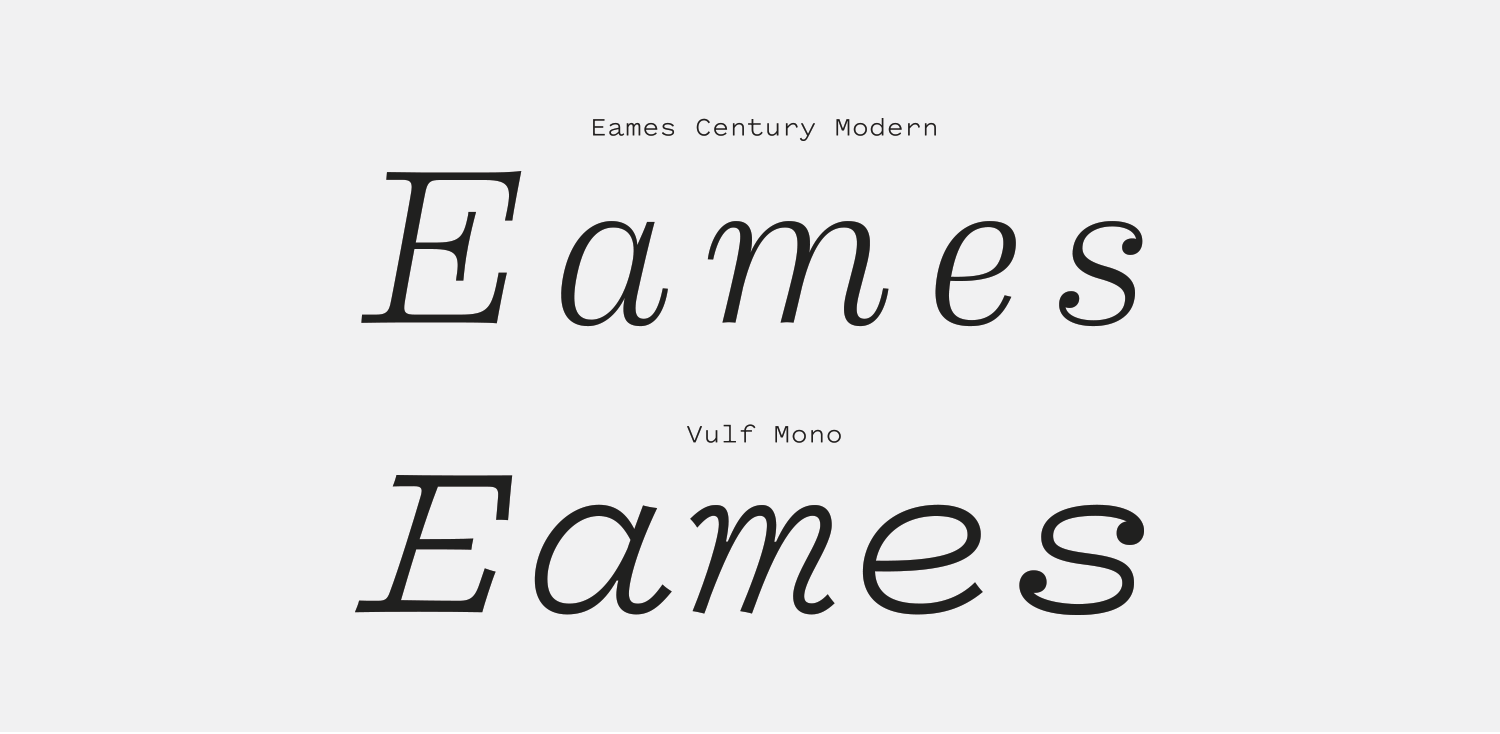Monospace fonts aren’t usually known for their warmth or personality. Someone forgot to tell Vulf Mono that. Designer James Edmondson has drawn it with a playful exuberance that pushes against the limitations of its genre.
Vulf Mono has a colorful backstory that centers around Edmondson’s devotion to the band Vulfpeck, whose bandleader reached out to him to commission a typeface based on the Light Italic typeface available as an option on IBM Selectric Typewriters. The initial request was for a bolder interpretation of that font, but over time an entire family of weights, romans and italics were created. The result is a robust family with an extended glyph set that encourages the designer to play and have fun while typesetting.
Vulf Mono fights against the rigidity that’s often expected of monospaced fonts. All of the edges are ever so slightly concave, giving a “flex” to the strokes that match the humanistic quality of the designs of the characters themselves. My first reaction to Vulf Mono was that it felt a bit like if Eames Century Modern had a monospace version. It shares the quirky character quality, flexed strokes and thick heartily-bracketed serifs. It’s charming, retro and playful—all unexpected qualities for a monospace font and making it worth celebrating.

